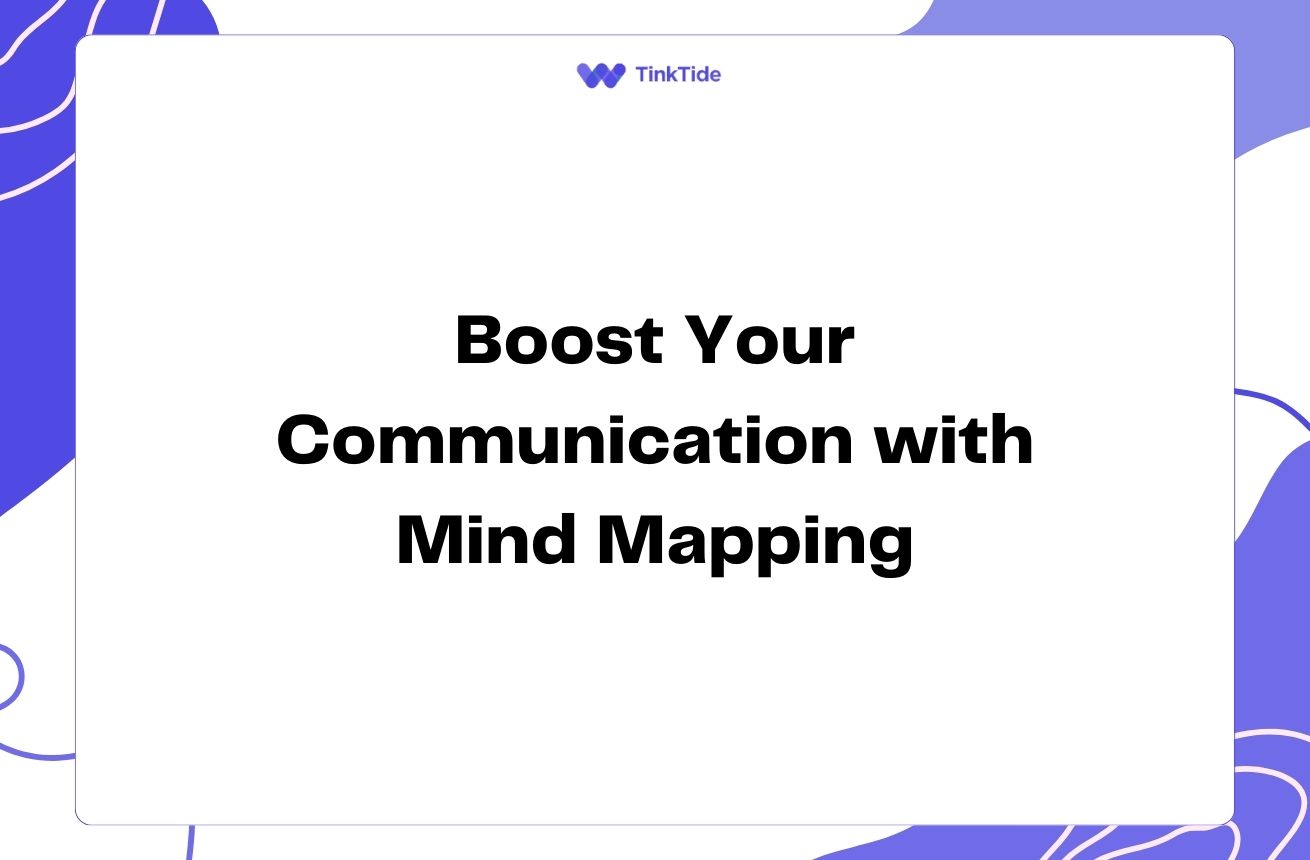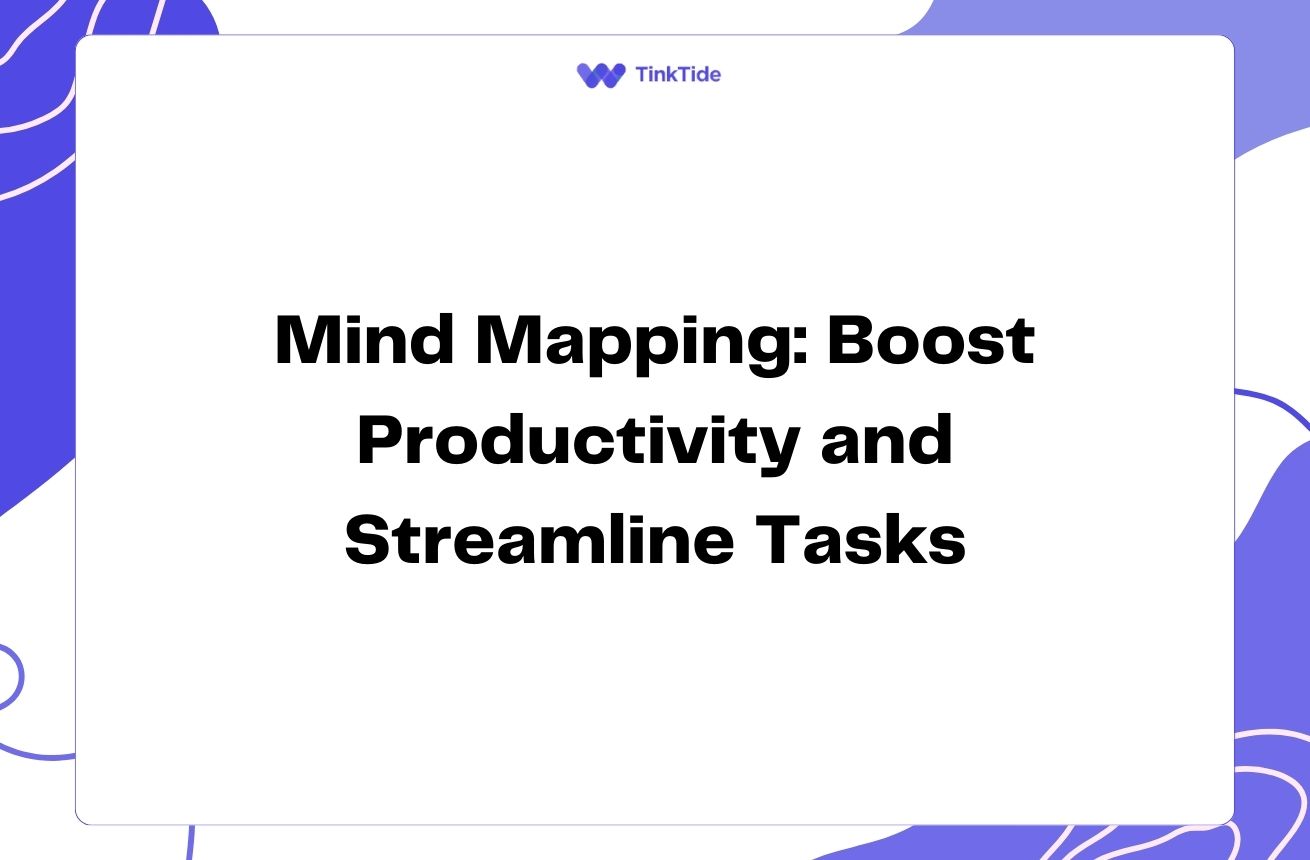Mind Mapping: Unleash Your Creative Potential
What is Mind Mapping?
Mind mapping is a powerful visual thinking tool that helps you organize information, generate ideas, and make connections between concepts. It's like creating a map of your thoughts, with a central idea branching out into related subtopics and details.
This technique, popularized by Tony Buzan in the 1970s, leverages the brain's natural tendency to think in non-linear patterns. By using colors, images, and spatial relationships, mind maps tap into both the logical and creative sides of your brain, making it easier to capture and process information.
Mind maps can be created using pen and paper or digital tools like MindMeister or XMind. These digital platforms offer additional features like collaboration and easy editing, making mind mapping even more versatile and accessible.
Benefits of Mind Mapping
Mind mapping offers numerous advantages for both personal and professional use. Here are some key benefits:
- Improved memory and recall
- Enhanced creativity and idea generation
- Better organization of complex information
- Clearer communication of ideas
- Increased productivity in planning and problem-solving
How Mind Mapping Enhances Idea Generation
Mind mapping is particularly effective for idea generation. By visually representing your thoughts, you can quickly explore different angles and make unexpected connections. This process often leads to innovative ideas and solutions that might not have emerged through linear thinking.
When you create a mind map, you're engaging in a form of brainstorming that allows for free association. As you add branches and sub-branches to your map, you're exploring various aspects of your central topic, which can spark new ideas and insights.
Moreover, the visual nature of mind maps makes it easier to spot patterns and relationships between different concepts. This can lead to unique combinations and innovative approaches to problems or projects.
Organizing Thoughts with Mind Maps
One of the primary benefits of mind mapping is its ability to help organize complex information. Unlike linear note-taking, mind maps allow you to capture ideas in a way that mirrors how your brain naturally processes information.
By starting with a central concept and branching out into related subtopics, you create a hierarchical structure that's easy to understand at a glance. This makes mind maps particularly useful for organizing research, planning projects, or structuring presentations.
The flexibility of mind maps also allows for easy reorganization of ideas. You can quickly move branches around, add new connections, or expand on certain areas as your understanding of a topic evolves.
Practical Applications of Mind Mapping
Mind mapping can be applied to various aspects of personal and professional life. Here are some common use cases:
- Project planning and management
- Note-taking during meetings or lectures
- Brainstorming sessions for creative projects
- Outlining articles, books, or presentations
- Personal goal setting and life planning
Getting Started with Mind Mapping
Ready to try mind mapping? Here's a simple process to get you started:
- Step 1: Start with a blank page and write your main topic or idea in the center
- Step 2: Draw branches from the center, each representing a subtopic or related idea
- Step 3: Add smaller branches to each subtopic, exploring further details
- Step 4: Use colors, symbols, and images to enhance visual appeal and memory retention
- Step 5: Review and refine your mind map, adding new connections or reorganizing as needed
Tools for Mind Mapping
While mind mapping can be done with pen and paper, digital tools offer additional features and flexibility. Here are some popular mind mapping software options:
- MindMeister: A web-based tool with collaboration features
- XMind: Available for desktop and mobile with a clean interface
- Coggle: A simple, free option for creating colorful mind maps
- MindMup: Offers integration with Google Drive for easy sharing
Common Questions About Mind Mapping
Here are some frequently asked questions about mind mapping:
Is mind mapping only for visual thinkers?
While mind mapping is inherently visual, it can benefit all types of learners. The process of creating a mind map engages both the logical and creative parts of the brain, making it a versatile tool for various thinking styles.
How is mind mapping different from traditional note-taking?
Unlike linear note-taking, mind mapping allows for non-linear thinking and easier visualization of relationships between ideas. It's more flexible and can often lead to better retention and understanding of information.
Can mind mapping be used for group brainstorming?
Absolutely! Mind mapping is an excellent tool for collaborative brainstorming. It allows groups to visually capture and organize ideas, making it easier to see connections and build upon each other's thoughts.
How long does it take to create a mind map?
The time it takes to create a mind map can vary depending on the complexity of the topic and your familiarity with the technique. Simple mind maps can be created in just a few minutes, while more detailed ones might take longer. With practice, you'll become faster at creating effective mind maps.
Can mind mapping help with memory and recall?
Yes, mind mapping can significantly improve memory and recall. The visual nature of mind maps, combined with the use of colors, symbols, and spatial relationships, engages multiple senses and strengthens memory associations.
Are there any limitations to mind mapping?
While mind mapping is a powerful tool, it may not be suitable for all types of information or situations. Very complex or highly structured data might be better represented in other formats. It's important to choose the right tool for the task at hand.
Additional Resources
The Mind Map Book
A comprehensive guide to mind mapping by Tony Buzan
Mind Mapping for Dummies
An accessible introduction to mind mapping techniques
TED Talk: The Power of Mind Mapping
An inspiring talk by Tony Buzan on the benefits of mind mapping
Mind Mapping in Education
An article exploring the use of mind mapping in educational settings
Mind Mapping for Business
A guide to using mind maps in various business contexts
Unleash Your Creative Potential
Mind mapping is a powerful technique that can revolutionize the way you think, plan, and create. By organizing your thoughts visually and enhancing your idea generation process, mind maps can boost your productivity and creativity in various aspects of life and work.
Whether you're brainstorming for a project, studying for an exam, or planning your next big venture, mind mapping can help you unlock new insights and make meaningful connections.
Start experimenting with mind mapping today and discover how this simple yet effective tool can transform your thinking and problem-solving abilities. Remember, the key is to practice regularly and find the approach that works best for you.
Elevate Your Productivity with Mind Mapping
Ready to unlock your creative potential? Try our mind mapping tools and templates today!
Start Your Free Trial

